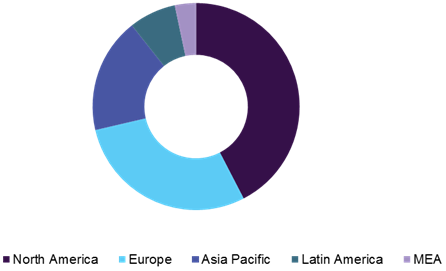Rising focus on maternal and infant care by the UN, WHO, and governments of developing nations is expected to drive demand for fetal & neonatal care equipment market
Although pregnancy was rife with many risks during earlier times, it has evolved to become a less-complicated procedure due to the advent of modern medicines & technological equipment. Developing countries are overcoming problems such as illiteracy, inadequate infrastructure, and inefficient transport system to reduce the existing high maternal and neonatal morbidity and mortality rates.
Crucial changes in the fetus are characterized by the development of the lungs, liver, and brain, which occur primarily during the final stages of pregnancy. However, factors such as pregnancy at a younger age may increase the chances of preterm birth. Premature and congenitally ill babies are born as a consequence of late maternal age, induced fertility, labor treatments, deprived prenatal care, and modification in lifestyle predilections. According to the WHO, there are 15 million premature births every year, out of which 1 million die as a result of complications. Those neonates who outlive prematurity experience various forms of disabilities. Various neonatal care equipment has been developed to treat premature infants. Hospital-acquired infections also known as nosocomial infections are responsible for prolonged hospital stays of infants.
Global fetal and neonatal care equipment market, by region, 2016 (USD Million)

Neonatal equipment includes a diverse range of devices and equipment used in Neonatal Intensive Care Unit (NICU) and Pediatric Intensive Care Unit (PICU), specialized in monitoring newborn babies and detecting complications. Neonatal equipment plays a crucial role in ensuring the health of the newborn in the first few days, as babies are highly susceptible to pathogens and need constant monitoring. Neonatal deaths account for 40% of the total deaths under the age of 5 years, which raises the importance of neonatal equipment for the global healthcare sector.
Furthermore, several government initiatives have been established to ensure better infant healthcare along with the provision of exceptional care to women and their newborn babies. For instance, the U.S. CDC publishes information about preterm births to raise awareness amongst people. According to the CDC, preterm birth affects about 1 out of 10 babies taking birth in the U.S. However, statistics by the CDC say that preterm birth rates have decreased from 2007 to 2014 in the U.S., owing to factors such as improved healthcare delivery methods and increasing awareness & knowledge related to childbirth.
The increasing awareness amongst the general population about the key role played by neonatal care in maintaining the health of newborns is a leading driver for the neonatal equipment market. As a result of this, governments of many evolving economies are undertaking efforts to support the extensive adoption of technologically advanced neonatal equipment. This is expected to be an important driving factor for the global neonatal equipment market over the coming years.
 In-depth report on global fetal (labor & delivery) and neonatal care equipment market by Grand View Research:
In-depth report on global fetal (labor & delivery) and neonatal care equipment market by Grand View Research:
To schedule a free market intelligence database demo, please complete the form below:
Service Guarantee
-
Insured Buying
This report has a service guarantee. We stand by our report quality.
-
Confidentiality
Your transaction & personal information is safe and secure.
-
Custom research service
Design an exclusive study to serve your research needs.
-
24/5 Research support
Get your queries resolved from an industry expert.